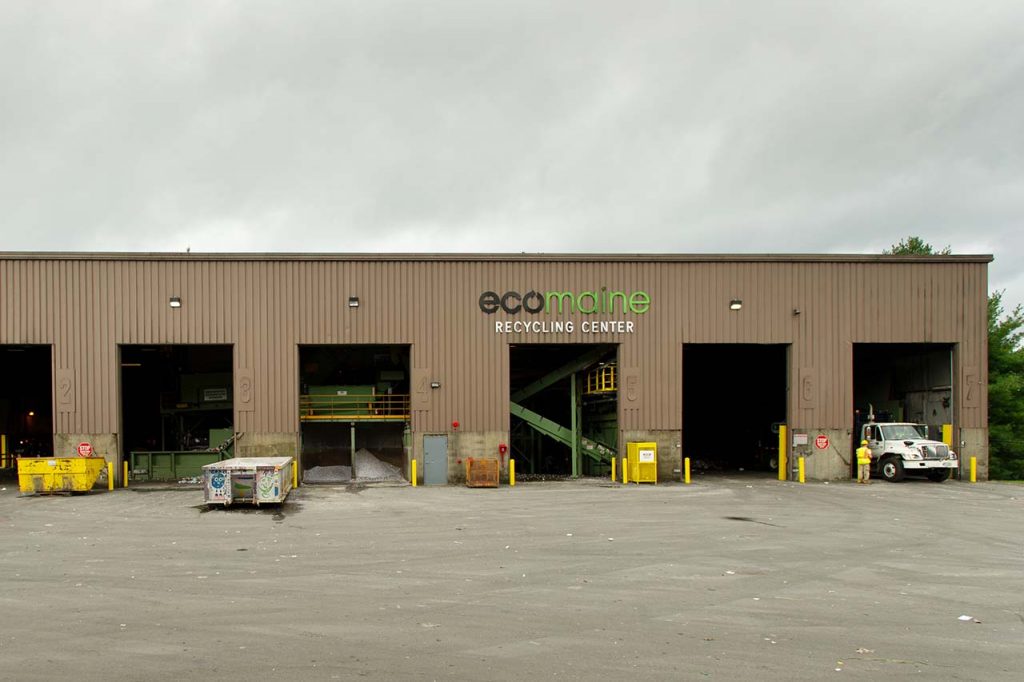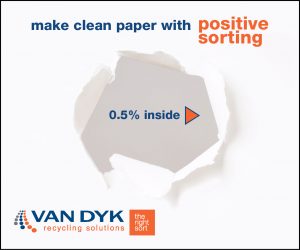
Portland, Maine-based Ecomaine runs a 50,000-square-foot MRF, as well as a waste-to-energy site and landfill. | Photo courtesy of Ecomaine/Credit: Brian Fitzgerald
Many recycling facilities track throughput, materials composition, contamination and other data points. One operator in the Northeast is now bringing meticulous measurement to social distancing.
Portland, Maine-based Ecomaine runs a 50,000-square-foot MRF, as well as a waste-to-energy site and landfill. It’s a nonprofit entity owned by 20 Maine communities and serves a population of around 400,000 residents.
In early March, when the seriousness of COVID-19 was becoming clear to U.S. businesses, Ecomaine’s CEO and general manager, Kevin Roche, began reaching out to public health officials in the region asking what he would need to do to remain open.
“The one thing I did know was we weren’t going to close,” Roche, a 30-year industry veteran, said in an interview last week. “In all the crises I’ve been through, in none of them have solid waste and recycling services been able to shut the door.”
Leaders at the local emergency management agency gave Roche a number of recommendations, and among them was a concept that at the time they were calling “physical distancing.”
Workers need to remain at least three feet apart, Roche was told, and whenever workers are inside that spatial window for more than 10 seconds, they should document the interaction on a log.
The idea was that if confirmed cases of COVID-19 are found among the company’s employees, management would be able to look back through the documentation and quickly determine which other workers would be most at risk.
Roche and his team implemented the distancing-log protocol among Ecomaine’s 100 employees on March 17, and soon after expanded the threshold from three feet of space between workers to six feet. Roche called the system a “game changer.”
“I had an opportunity to talk to the Maine [Centers for Disease Control and Prevention] director through a call-in, and I told him what we were doing,” Roche said. “He said, ‘You’re doing our job for us basically. That’s exemplary work and that is going to keep you going.’ It’s the transmission between two people he was most worried about.”
As of April 16, Ecomaine had seen two confirmed cases of COVID-19 among its workforce – one infected individual is a staffer and the other had been working as a contractor (one staffer’s spouse has also tested positive). In each case, the organization was able to conduct a full investigation to determine other at-risk individuals.
Roche said the documentation effort has also helped keep social distancing top of mind for everyone within the operation.
“Now you have to write down every single close encounter you have, and you begin to develop really good habits about keeping your distance,” he noted. “It also allowed us to check in on employees and see how we could correct issues we were having. Why did you have to be within six feet of this person for an hour-and-a-half or three hours or whatever the case may be?”
In addition to the social-distancing framework, Ecomaine gave all employees an additional 40 hours of paid sick leave. This made it easier for supervisors to tell workers to remain home if they were showing COVID-19 symptoms or had been in close contact with an infected individual.
The operation has also been staggering break times and offering workers box lunches so they don’t need to head to a store to grab a bite.
Roche noted the harder step has been asking workers to be diligent about writing down each close-contact interaction. But he reiterated the importance of the process: “It brings a whole other level of scrutiny to social distancing.”
More stories about MRFs
- MRFs share how they develop accepted material lists
- Upgrades completed on Connecticut Casella MRF
- Battery dangers, solutions take center stage at ReMA



